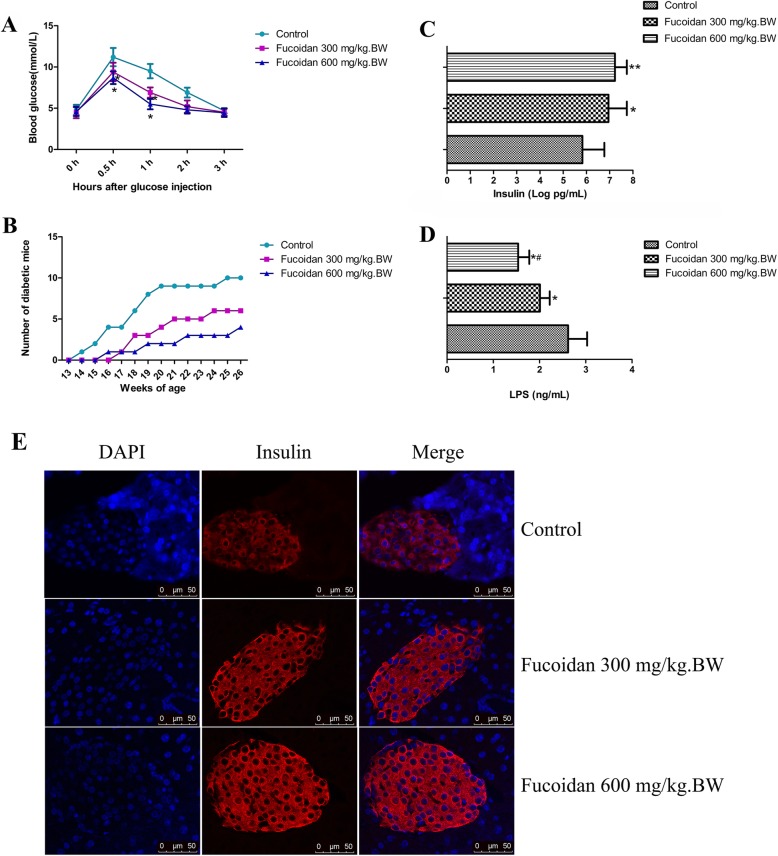Fig. 1.
Effect of fucoidan on glucose tolerance, the incidence of diabetes, serum insulin and LPS levels in NOD mice. a After 5 weeks of intervention in each group, intraperitoneal glucose tolerance was determined in 12-week-old NOD mice. Compared with the NOD control group, fucoidan treatment (300 mg/kg.BW or 600 mg/kg.BW) significantly lowered blood glucose levels at 30 min and 60 min after glucose load (P < 0.05). b The blood glucose changes in different week-age mice. The results showed that glucose tolerance was significantly increased. After the intervention, blood glucose was measured twice a week until the animal was 26 weeks old. Among the 12 animals observed in each group, 10 mice in the control group developed diabetes (the incidence rate is 83.3%). Six mice in low-dose fucoidan group developed diabetes (the incidence rate is 50%); Only 4 mice in high-dose fucoidan group developed diabetes (the incidence rate is 33.3%). c Serum insulin levels. Compared with NOD control mice, serum insulin levels in 12-week-old NOD mice was increased in high-dose fucoidan groups. d Serum LPS levels. After fucoidan intervention, LPS levels decreased. e Pancreatic tissue insulin expression. Pancreatic immunofluorescence results showed high insulin expression levels of islet cells in fucoidan treatment groups. *, Compared with the control group, P < 0.05; **, Compared with the control group, P < 0.01; #, Compared with the 300 mg/kg.BW fucoidan intervention group, P < 0.05

